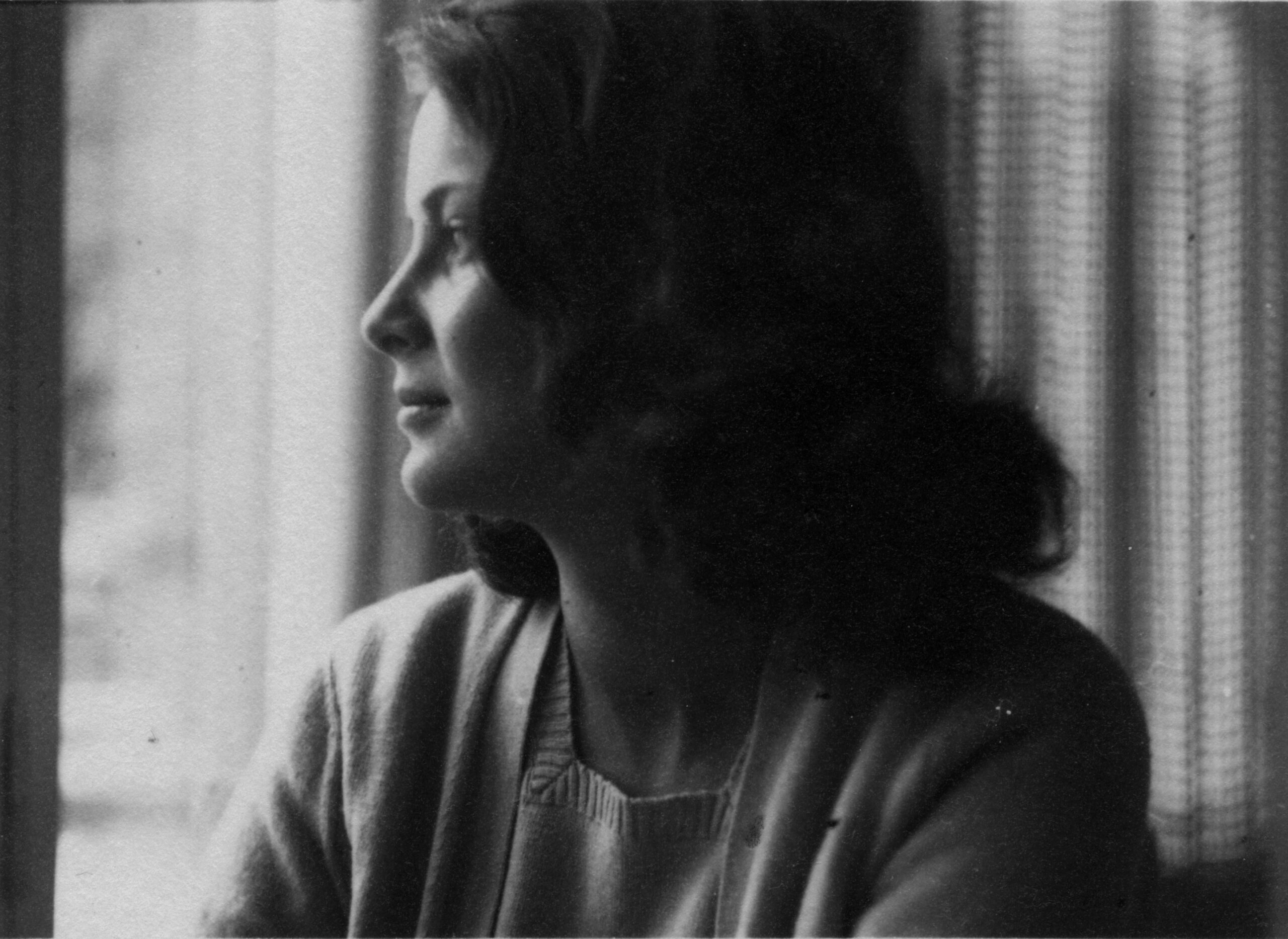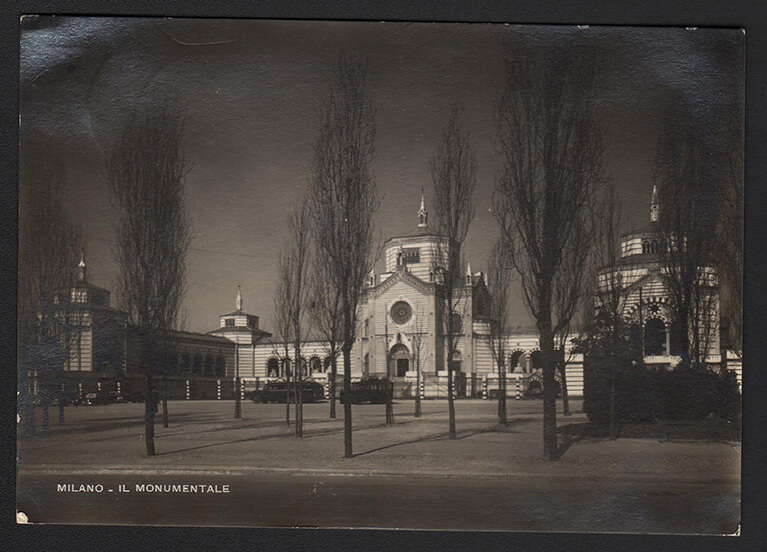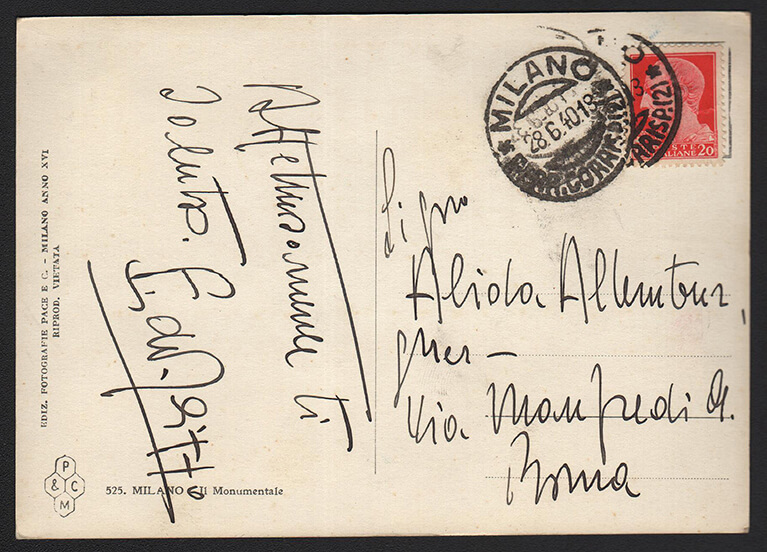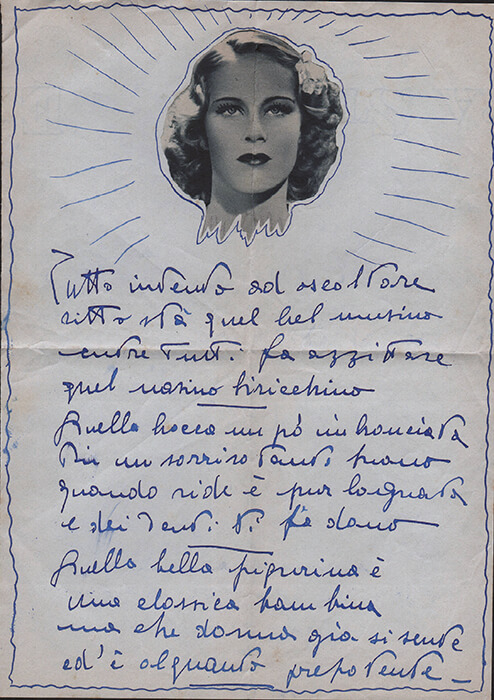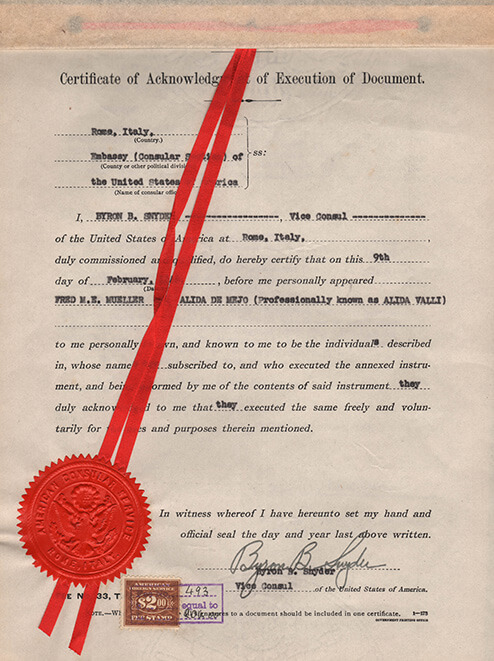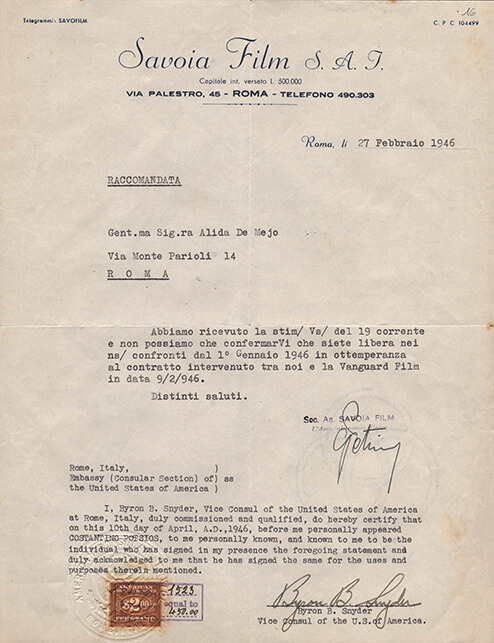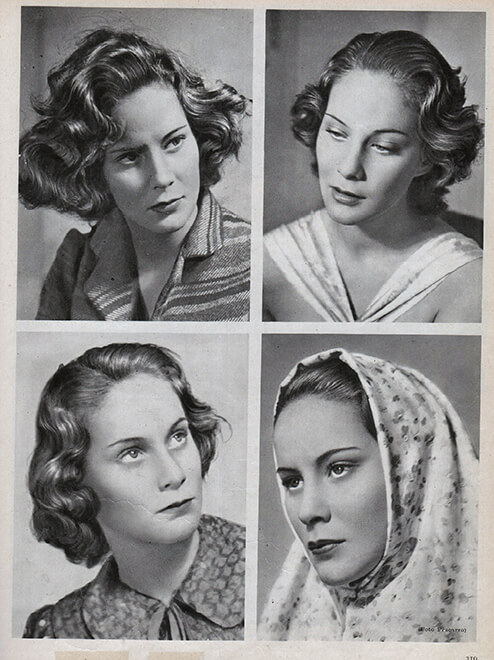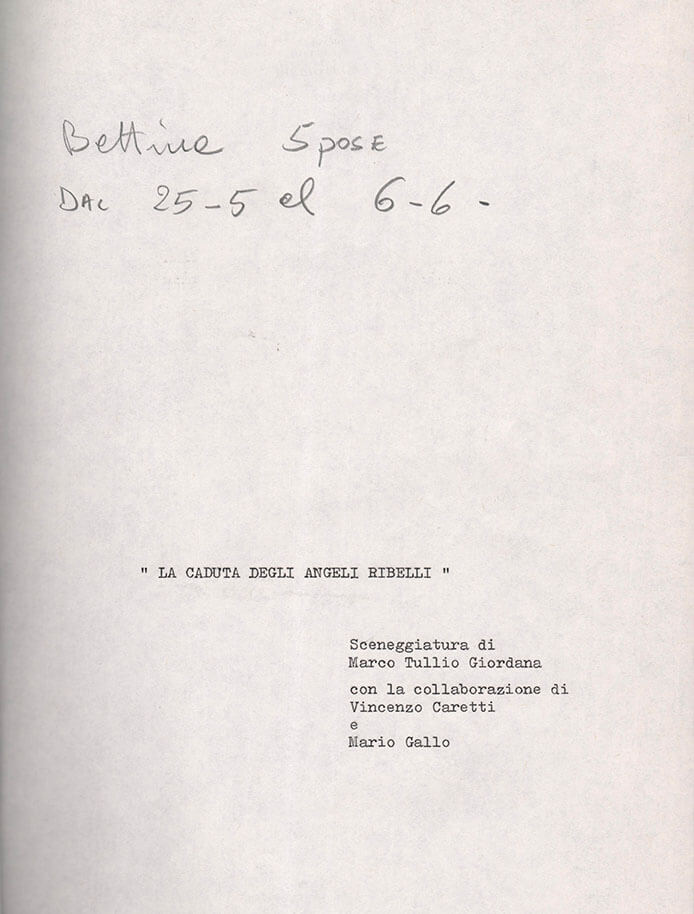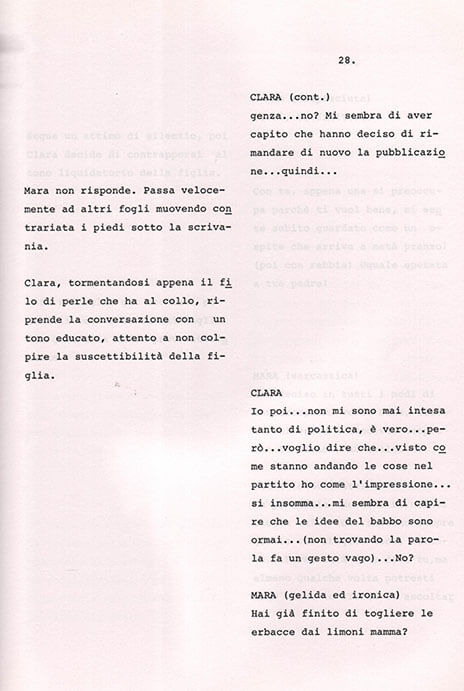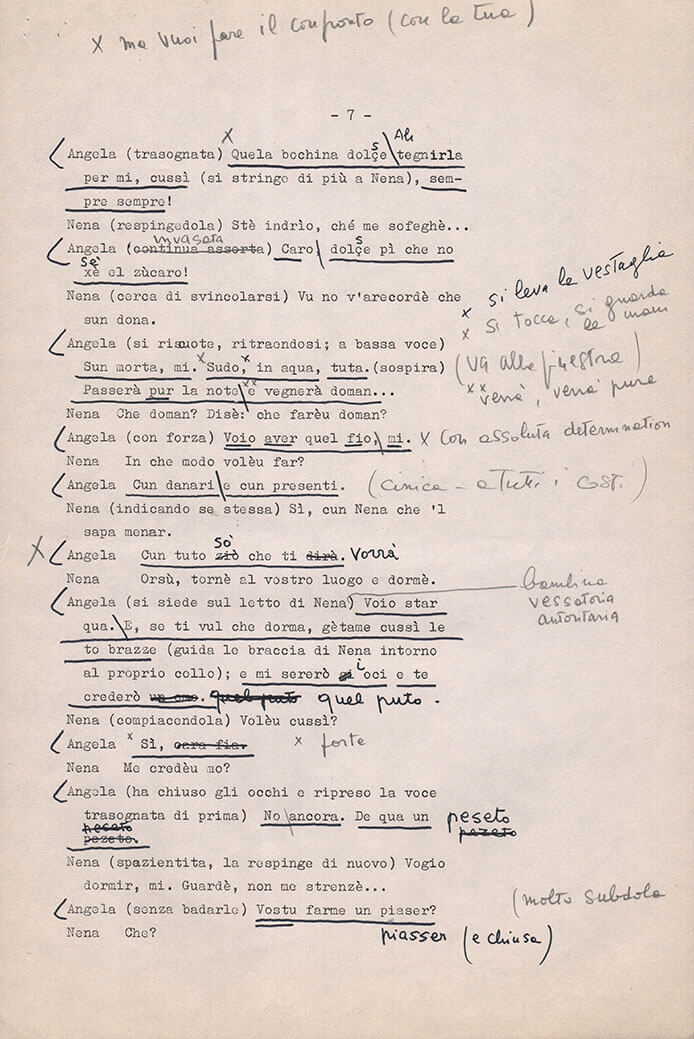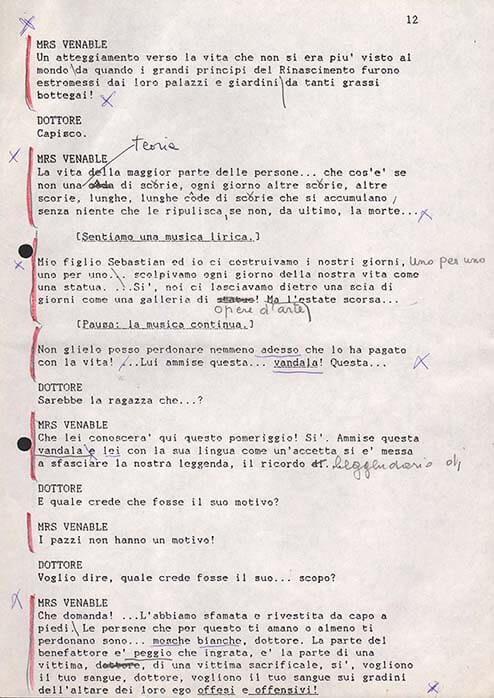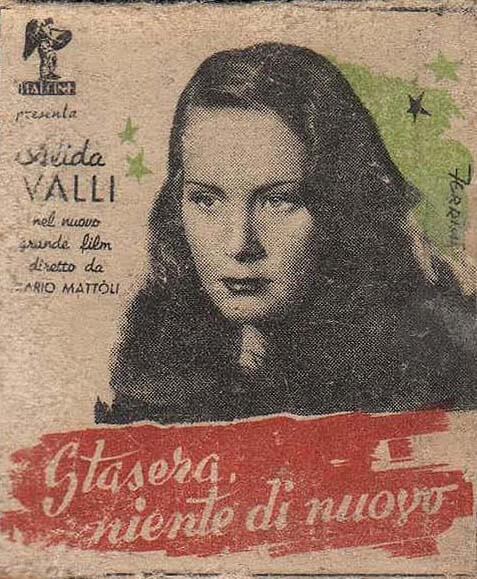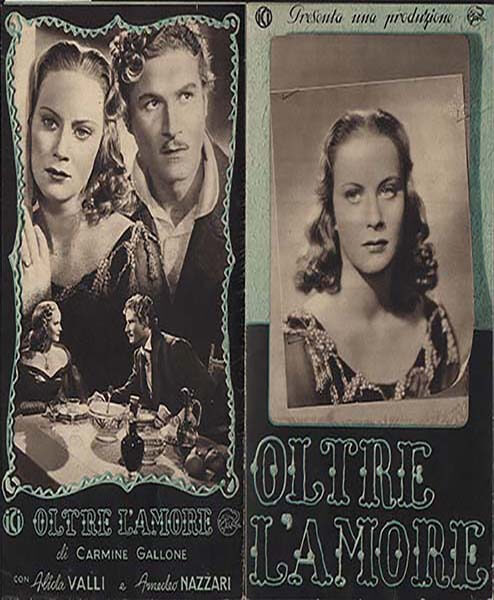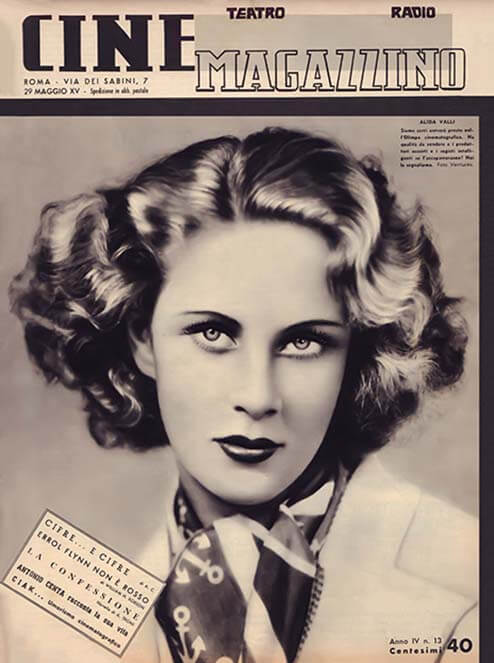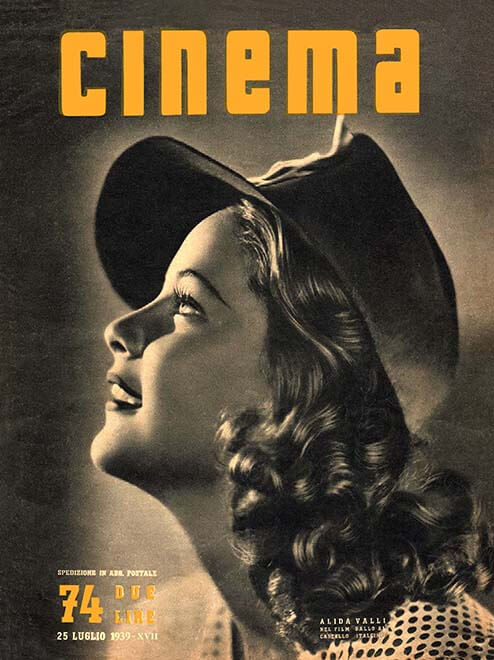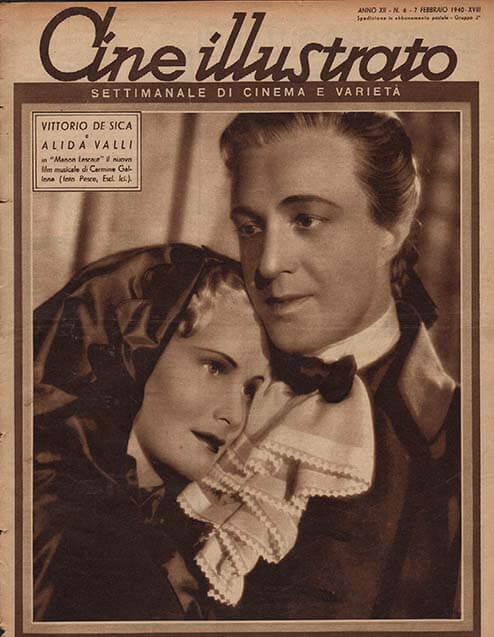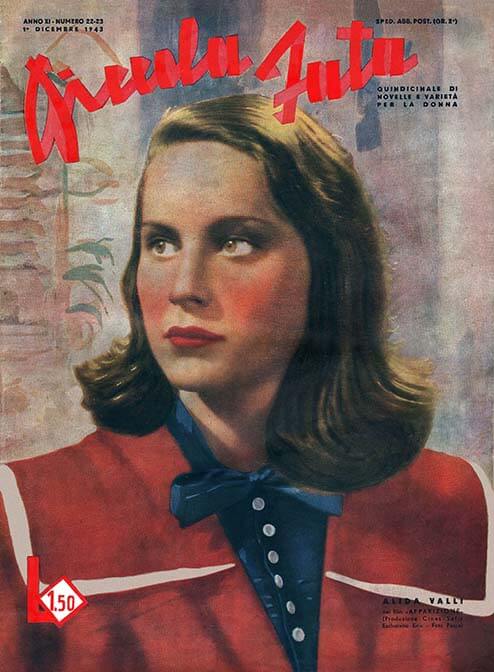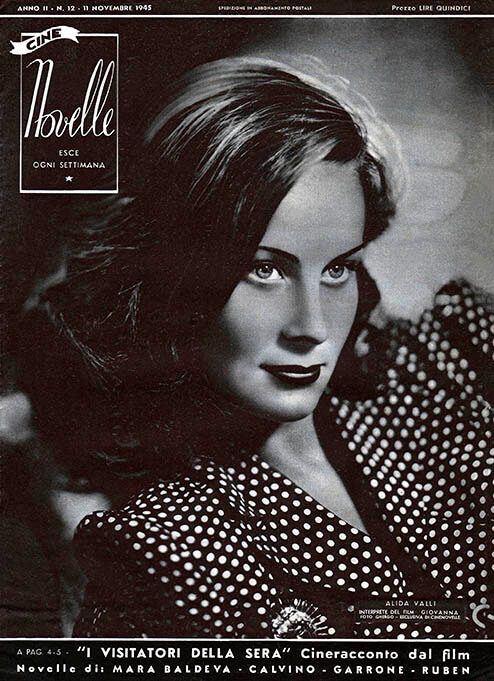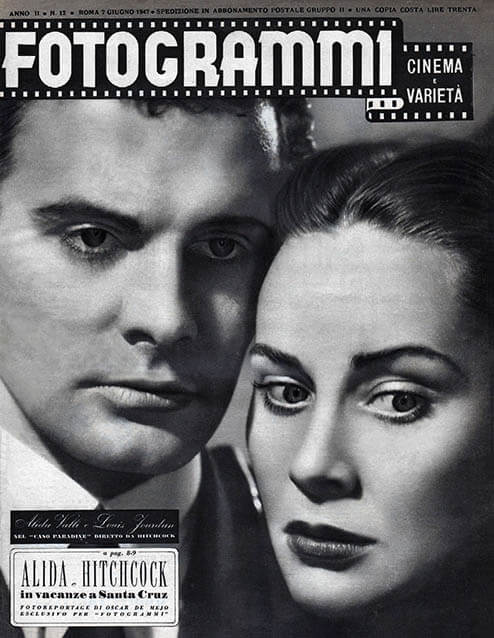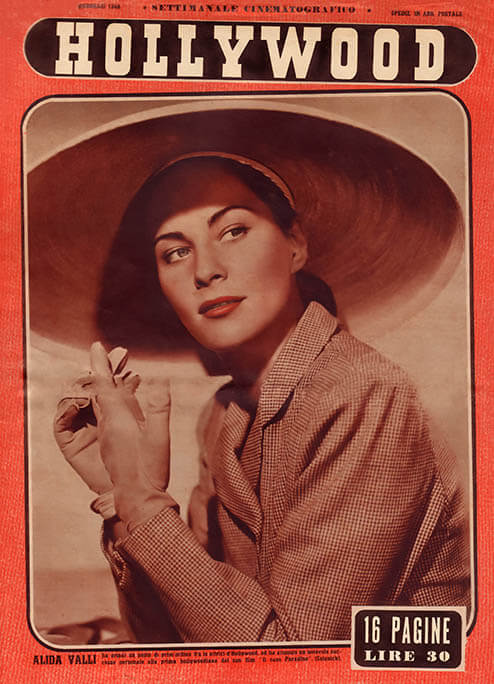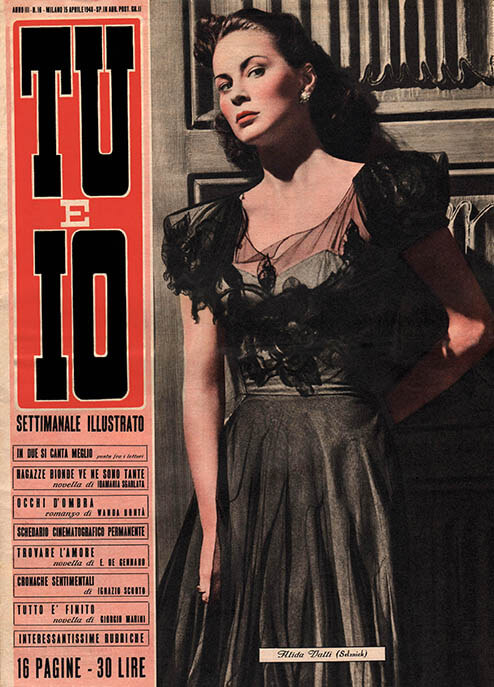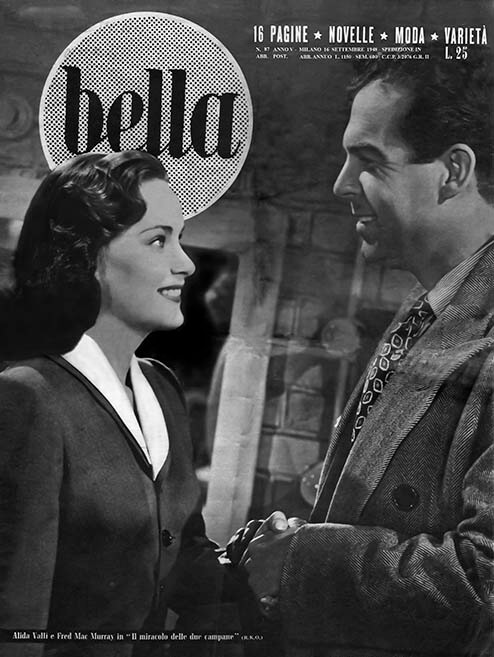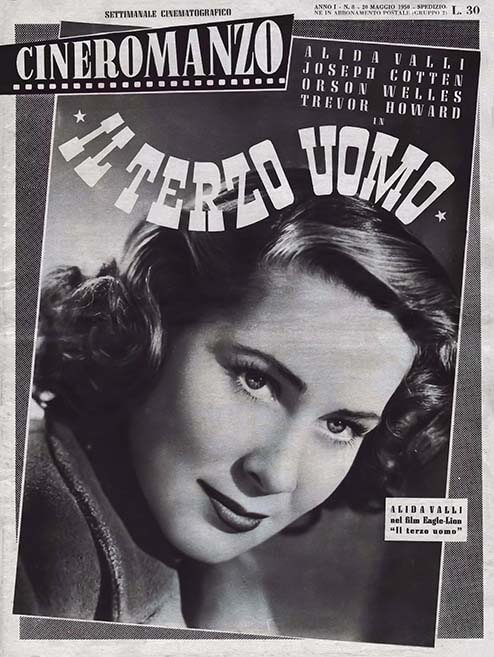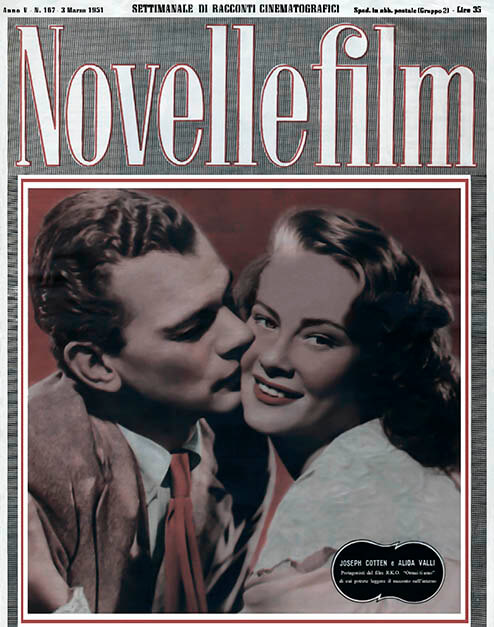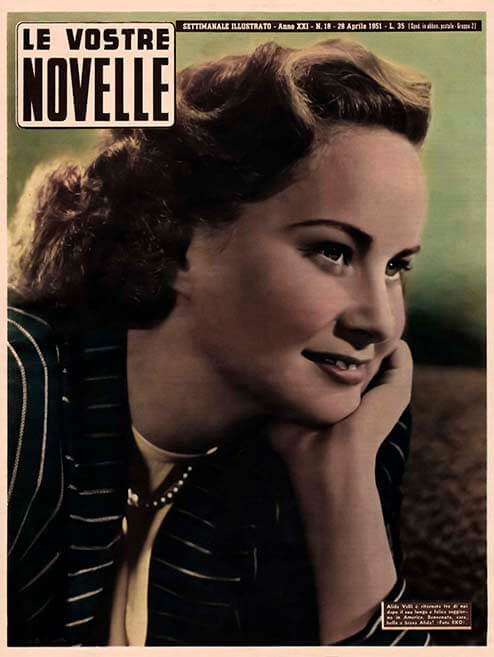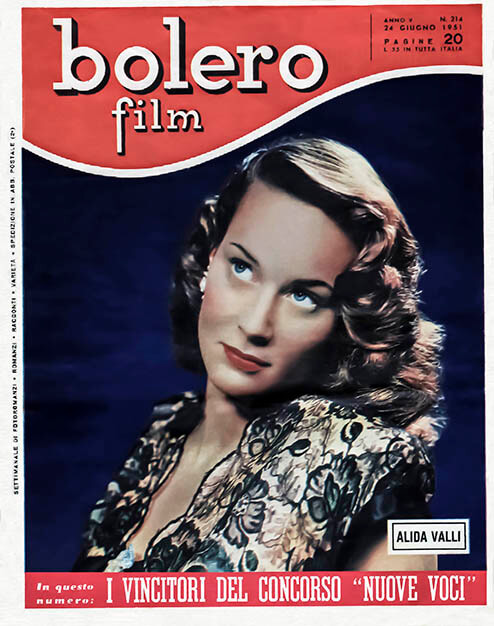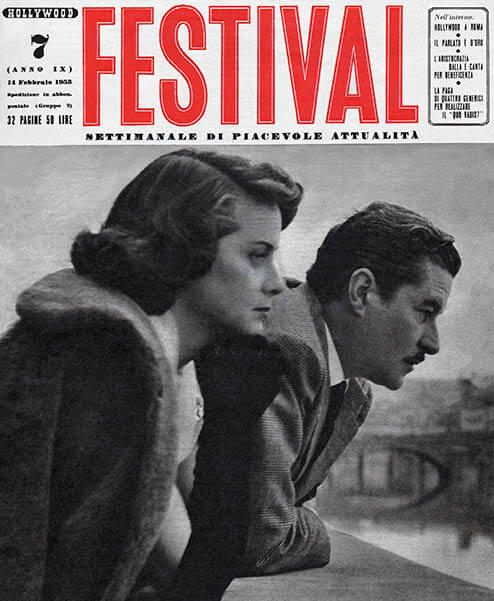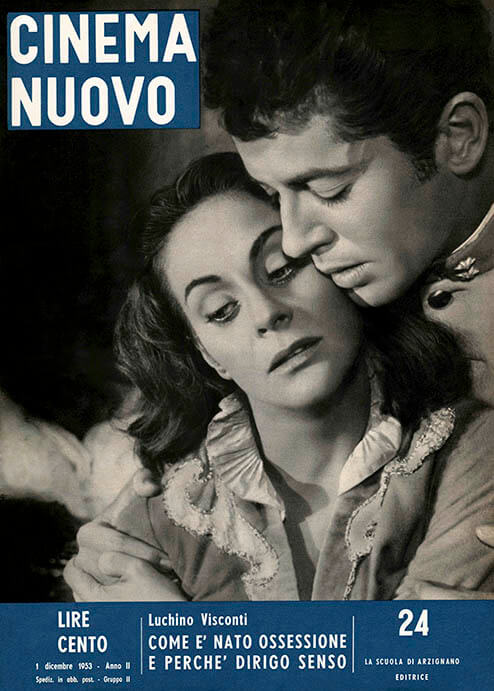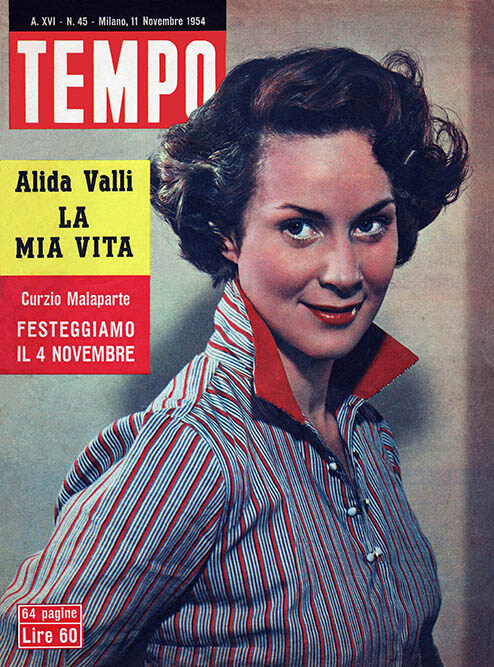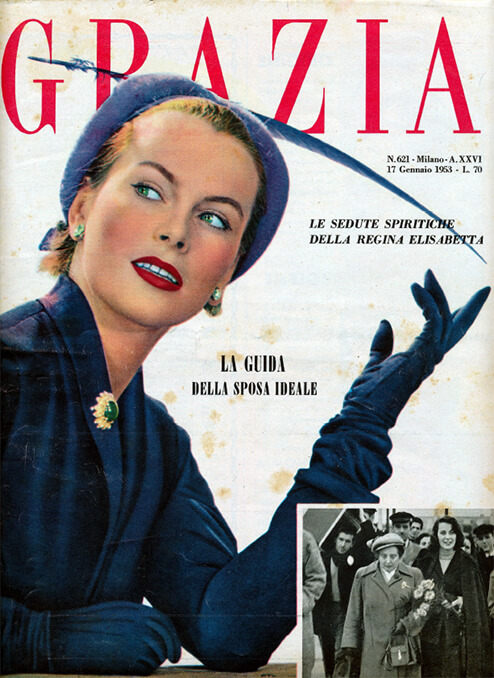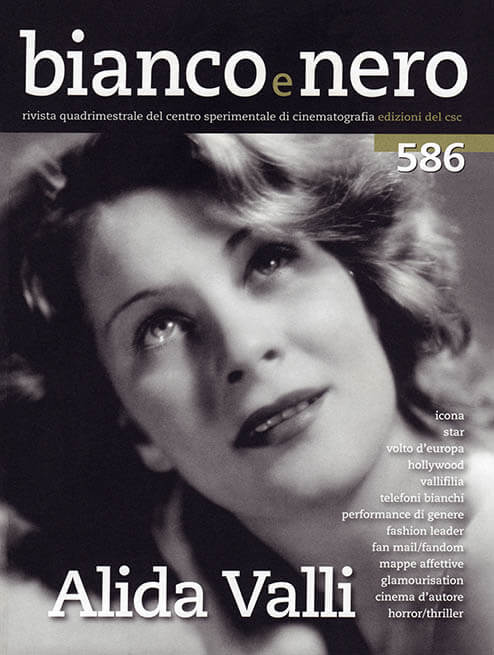The actress’s archive was donated by her sons Carlo and Lorenzo De Mejo to the Fondazione Centro Sperimentale di Cinematografia between 2015 and 2016. Her grandson Pierpaolo De Mejo ̶ actor, director and screenwriter ̶̶ has for years now been involved in the promotion and protection of the cultural and artistic heritage brought about by Alida Valli, first with his father Carlo, through the establishment of the Alida Valli Association, and now in collaboration with the CSC. The actress’s collection consists of forty eight files, in seventy-seven folders, containing thousands of work-related documents, about five thousand letters, about one hundred magazine issues, one hundred and sixty-nine screenplays and scripts, and about one hundred promotional documents. The archive was arranged in accordance with the organisation envisaged by Valli herself, in collaboration with her son Carlo and her grandson Pierpaolo, resulting in nine sets: Correspondence; Work; Press Review; Screenplays and Scriptments; Scripts; Promotional Documents; Graphic Material; Cultural Associations, Festivals and Events; Family and Personal Documents. The Photographs section is available for consultation at the CSC Photografic archive. Given the complexity of the documentation, some sets have been subdivided into series dedicated to a specific author or topic. Both sets and series follow a chronological order from most recent to oldest document. The inventories attached to the correspondence have been linked to the online catalogue as digital objects so as to help guiding the researcher through the various contents.
Correspondence (1930-2006)
The epistolary is the largest set in the collection (about 5000 letters) and includes one file of drafts of letters sent by Alida Valli (1936-2004) and forty folders of incoming mail (1930-2006); of these, fifteen include mail from various senders, archived according to their original chronological order of delivery; one regards awarded prizes; one includes invitations to festivals and events; one collects fan poetry; one is titled Alida Valli la stella delle valli di Menaggio e Valsolda and includes short compositions written by elementary school children; there are twelve folders with 1400 letters by her fans, filed per year (1937-2006), while two collect mail by her agents Giuseppe Perrone and Olga Horstig Primuz (1972-2000); four folders gather letters by frequent senders: Giuseppina (Bibi) Campanella, Mario Gasperini, Plinio Mariani, Giancarlo Zagni; three more files collect letters from famous correspondents and relatives, which the actress herself had selected and kept separately and of which the heirs have kept the originals, while a digital copy has been provided for consultation. Two sub-sets also belong to the Valli Collection, i.e. the file containing mail from Guseppina (Bibi) Campanella and the file that includes letters by Giancarlo Zagni.
Work (1941-2001)
The set is composed of six files of chronologically ordered Contracts, which follow a classification into separate folders (according to roles in cinema, theatre or television and to subject) and contain: agreements, contracts, proposals, work plans and administrative documentation. This portion required accurate study in order to organize and classify the documentation, especially to identify both films and directors, as they were often not indicated. Some outstanding documents include the termination of contractual commitments with the Italian production company Savoia film (1941) and the actress’s transition to David O. Selznick’s American Vanguard Films (1945) as well as contracts such as that with Titanus (1961) for the film Il disordine by Franco Brusati, in which Alida Valli grants two takes, compatibly with the requirements of her engagement in the film Ophélia by Claude Chabrol (1963).
Press Review (1937-2006)
It includes sixteen files of press clippings (1937-2006), sorted by year, month and day. The articles were specifically selected for the actress by the company “Eco della stampa” during the 1950s and 1970s. There are four other press review folders dedicated to the films Noi vivi (1942) by Goffredo Alessandrini (1971-1989) and Jupon Rouge (1987) by Geneviève Lefebvre (1986-1987); one regards the Premio città di Gemona ad Alida Valli (1990); one concerns the theatre performance of Questa sera si recita a soggetto by Luigi Pirandello (directed by Giuseppe Patroni Griffi, 1995). About one hundred magazines have been used to supplement the Library’s collection, while issues with double copies are stored in three folders (1939-1955).
Screenplays and Scriptments (1970-2005)
This set features about hundred film and television screenplays and three film scriptments. There are several dismissed projects, which reveal interesting anecdotes, such as a letter from Felice Laudadio dating from 9th March 1999, within the script of Destinazione Verna, in which Michelangelo Antonioni proposed for her the role of an elderly woman . Other scripts submitted to the Chiarini Library either through legal deposit or as a donation, which cover most of her activity in the film industry, are also noteworthy.
Scripts (1956-2004)
About fifty nine scripts, some of which contain only the parts Valli was to play, complete with handwritten notes (as in the case of the role of Violet Venable in Improvvisamente l’estate scorsa by Tennessee Williams), hint at her passion for theatre, an area in which she was very active since the mid-1950s.
Promotional Documents (1939-1997)
This collection of promotional documents mostly features items issued by production companies and theatres and includes posters and photo stories. The ad of the movie Stasera niente di nuovo (1942) by Mario Mattoli on a matchstick box, a distinctive example of the advertising techniques of the time, is especially outstanding. There are also envelopes of picture cards of the films Oltre l’amore (Carmine Gallone, 1940) and Piccolo mondo antico (Mario Soldati, 1941), published in the 1940s by Rizzoli as inserts for the magazine «Cine Illustrato». On the back of each printed frame there is a summary of the plot of the movie or the bio of one of the characters.
Pressbooks (1939-1996) – These are ten brochures, which were distributed for promotional purposes in conjunction with the release of films such as Taverna rossa (1940) by Max Neufeld and Il terzo uomo (The Third man, 1949) by Carol Reed (in Italian); they are interesting both from a graphic and an informative point of view.
Theatre Programmes (1967-1997) – Hundreds of programmes enable to identify the theatre companies the actress was a member of and retrace her numerous appearances, season after season, in the main theatres throughout Italy.
Graphic Material (1939-2000)
This set includes iconographic material of various nature, e.g. drawings and caricatures, some of unknown authorship, while others are signed. There are also signed printed cards and the envelopes with letterheads and initials that the actress used for her correspondence.
Cultural Associations, Festivals and Events (1974-1988)
One file, divided by subject, includes the newsletters of Trento’s Quelli del Quarto, projects for the festival Teatro italiano a New York and a proposal for an exhibition titled T’amerò sempre for the Festival Rosa in Gabicce.
Family and Personal Documents (1940-1990)
The folder consists of five files and three document holders. It collects letters of proxy, deeds of donations, letters concerning the sale of real estate, income statements, invoices, receipts, passports, various certificates and a will draft.
Photographs (1921-2006)
The photographic material, which can be consulted at the Photografic archive of the Centro Sperimentale di Cinematografia, consists of a collection featuring primarily photographic prints and a smaller number of negatives (both black and white and colour), making up a total of about 5000 items (about 1000 duplicates). The printing formats are extremely varied, from the smallest (4.5×3.5cm, 7x7cm, 7x9cm), to the largest (e.g. 40x30cm), and the dating ranges between the early 20th century and 2006, the year of the actress’s passing. From an iconographic perspective, the photos take on a distinctly private connotation: family life and relationships of friendship are prevalent themes. A specific section is dedicated to Bibi Campanella, Valli’s fan and personal assistant. As far as professional documentation is concerned, photos of most of the films and theatre performances in which the actress starred are also included.
Bio on Alida Valli (Pula, 31st May 1921 – Rome, 22nd April 2006)
Alida Maria Laura Altenburger, film, theatre and TV actress, was born Baroness von Marckenstein und Frauenberg in Pula and since a very young age decided to pursue an acting career, attending the preparatory at acting course at the Centro Sperimentale di Cinematografia (1936). During her seventy-year-long activity, she was involved in over a hundred well-known national and international film productions that have shaped the history of cinema, playing a variety of roles, from the young, carefree woman typical of Telefoni Bianchi films to tormented or disturbing characters, from Oedipal mother to elderly woman. Throughout her film career, the actress, who made her debut in the film I due sergenti by Enrico Guazzoni (1936), followed by Il feroce Saladino (1937) by Mario Bonnard ̶ in which she appeared for the first time under the stage name Valli ̶ , starred in memorable films such as Carmine Gallone’s Manon Lescaut (1940), Mario Soldati’s Piccolo mondo antico (1941) and Eugenia Grandet (1946) ̶ the first of which won her the National Film Award for Best Actress of the Year, while the second earned her the Nastro d’Argento ̶ , The Paradine Case (1947) by Alfred Hitchcock, The Third Man (1949) by Carol Reed, Senso (1954) by Luchino Visconti ̶ for which she was awarded the Grolla d’oro for best actress ̶ , Il grido (1957) by Michelangelo Antonioni, Edipo re (1967) by Pier Paolo Pasolini, La strategia del ragno (1970), Novecento (1976) and Berlinguer ti voglio bene (1977) by Bernardo Bertolucci, Suspiria (1977) by Dario Argento. Among other awards, she won a David for best supporting actress in La caduta degli angeli ribelli (1981) by Marco Tullio Giordana, the David Career Award in 1991 and the Career Golden Lion in 1997. In 1956 she made her theatre debut with Giancarlo Zagni’s company, reaffirming her talent and success through the works of Pirandello, Ibsen, Williams, Sartre, Miller, O’Neill. She has also been active in television since 1959, acting in dramas, comedies and television films, including I figli di Medea (1959), Il caso Mauritius (1961) and L’eredità della priora (1980) by Anton Giulio Majano.
Reproduction in any medium, even partial, of the images shown is forbidden.

 Login
Login Chart
Chart








